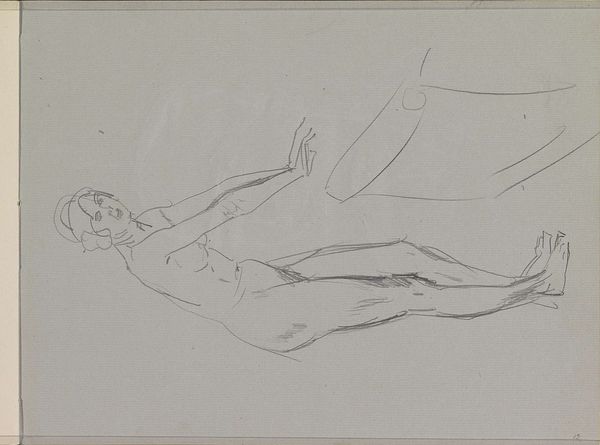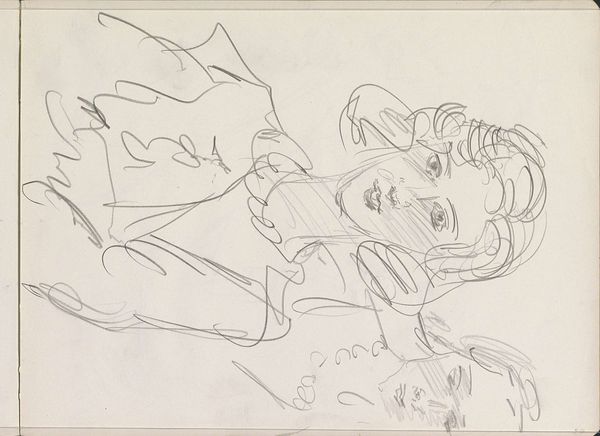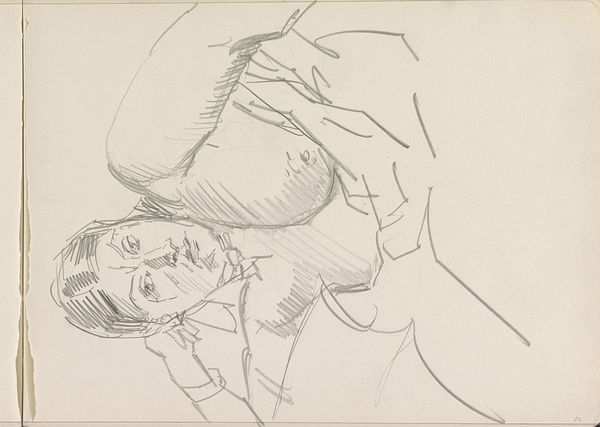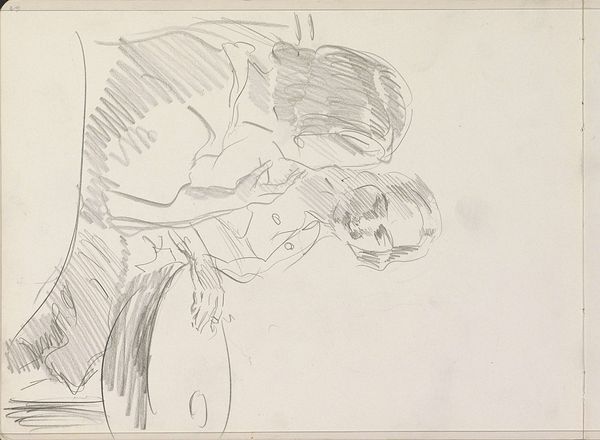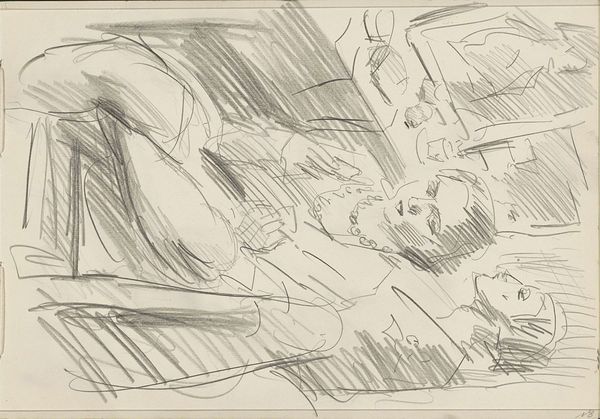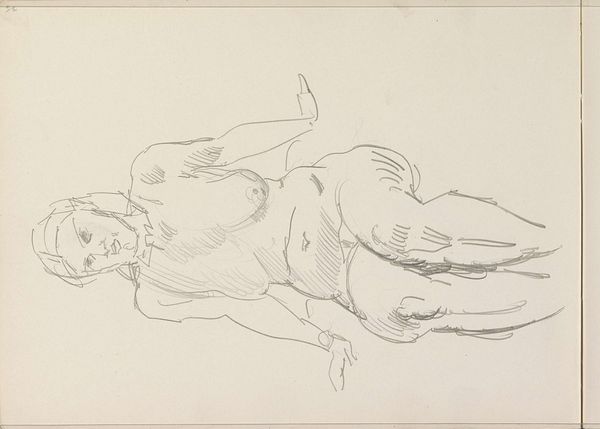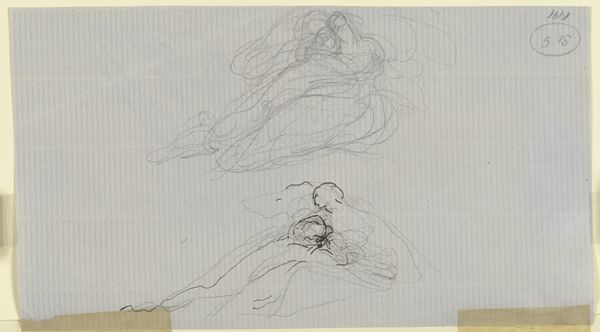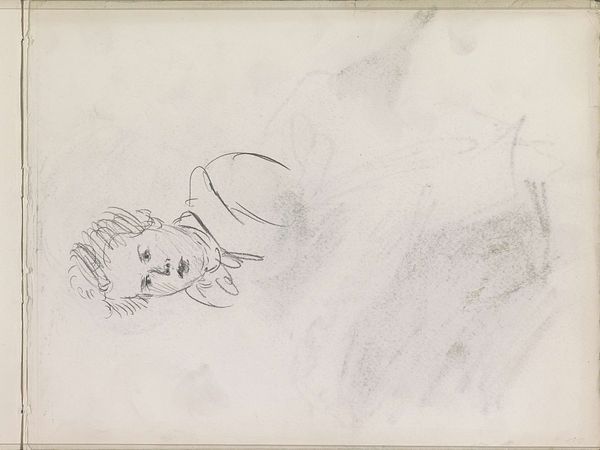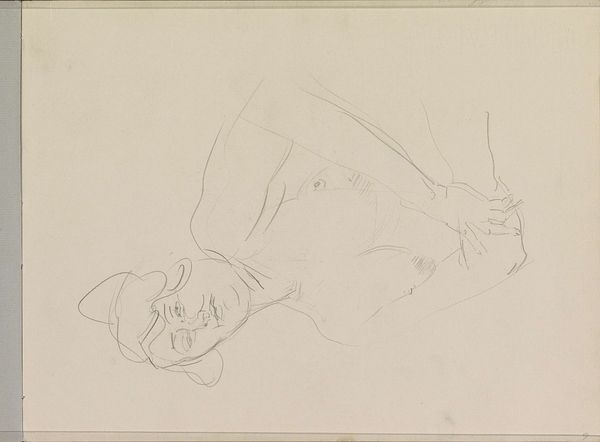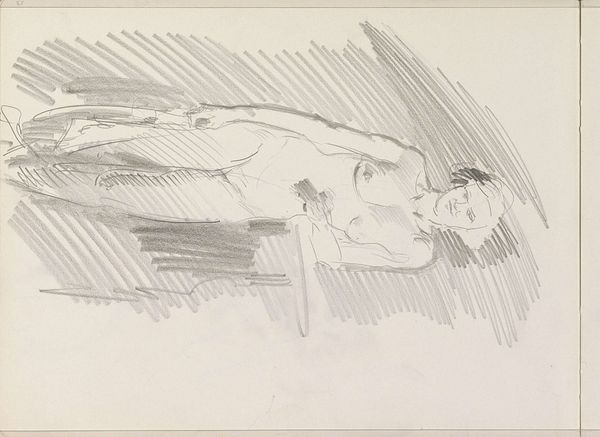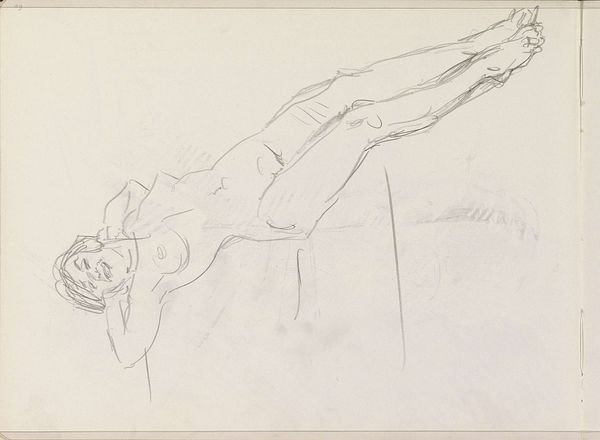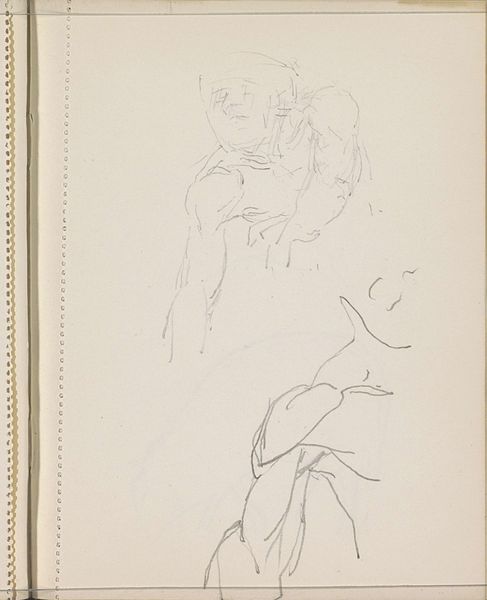
Copyright: Rijks Museum: Open Domain
Editor: So, this is "Man en vrouw tegenover elkaar," or "Man and Woman Facing Each Other," a pencil drawing on paper by Isaac Israels, dating from around 1915 to 1925. The sketchiness gives it a feeling of transience, like we’re seeing a fleeting moment. What strikes you most about it? Curator: What’s fascinating here is how Israels, known for his Impressionistic style, engages with the representation of modern relationships and social dynamics of the time. We need to consider how societal expectations and gender roles impacted his artistic choices. What kind of relationship dynamic do you perceive in this drawing? Editor: I’m not entirely sure. It seems informal and perhaps unbalanced, given their placement on the page and the woman's facial expression being so much more defined. Could it be reflecting something about the changing roles of men and women at that time? Curator: Precisely! The era was marked by significant social shifts, particularly in the roles and expectations of women. Israels’ sketch might subtly depict the evolving dynamics, perhaps hinting at the woman's emerging visibility in public life while still retaining some ambiguity, which opens the door to various interpretations influenced by the viewer’s own background. What do you think about the incompleteness of the sketch and how that affects its social message? Editor: That's interesting! The sketch-like quality does make it feel unfinished. It makes you wonder if he intended to leave it open to interpretation. Thank you, that definitely shed light on how much the social context informs our view of the artwork. Curator: Yes, it really brings context into focus. It makes you appreciate art and art history more.
Comments
No comments
Be the first to comment and join the conversation on the ultimate creative platform.

